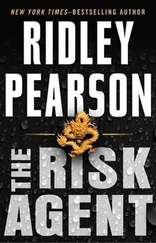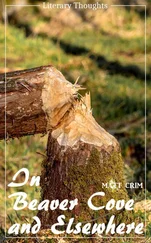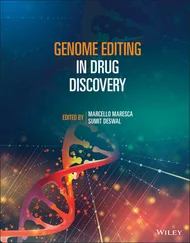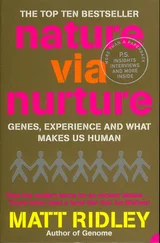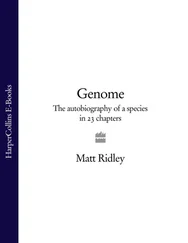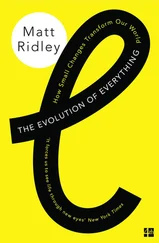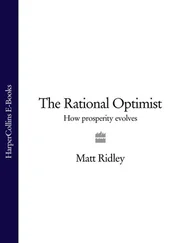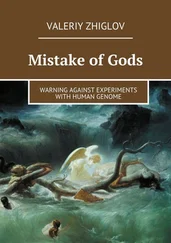Genome - Matt Ridley
Здесь есть возможность читать онлайн «Genome - Matt Ridley» — ознакомительный отрывок электронной книги совершенно бесплатно, а после прочтения отрывка купить полную версию. В некоторых случаях можно слушать аудио, скачать через торрент в формате fb2 и присутствует краткое содержание. Жанр: Старинная литература, на английском языке. Описание произведения, (предисловие) а так же отзывы посетителей доступны на портале библиотеки ЛибКат.
- Название:Matt Ridley
- Автор:
- Жанр:
- Год:неизвестен
- ISBN:нет данных
- Рейтинг книги:5 / 5. Голосов: 1
-
Избранное:Добавить в избранное
- Отзывы:
-
Ваша оценка:
- 100
- 1
- 2
- 3
- 4
- 5
Matt Ridley: краткое содержание, описание и аннотация
Предлагаем к чтению аннотацию, описание, краткое содержание или предисловие (зависит от того, что написал сам автор книги «Matt Ridley»). Если вы не нашли необходимую информацию о книге — напишите в комментариях, мы постараемся отыскать её.
Matt Ridley — читать онлайн ознакомительный отрывок
Ниже представлен текст книги, разбитый по страницам. Система сохранения места последней прочитанной страницы, позволяет с удобством читать онлайн бесплатно книгу «Matt Ridley», без необходимости каждый раз заново искать на чём Вы остановились. Поставьте закладку, и сможете в любой момент перейти на страницу, на которой закончили чтение.
Интервал:
Закладка:
enable them to live in hot places. It is we that have retained the primitive molecular features of the Lucas in our cells; bacteria are much more 'highly evolved' than we are.
This strange tale is supported by the existence of molecular 'fossils' - little bits of R N A that hang about inside the nucleus of your cells doing unnecessary things such as splicing themselves out of genes: guide R N A , vault R N A , small nuclear R N A , small nucleolar R N A , self-splicing introns. Bacteria have none of these, and it is more parsimonious to believe that they dropped them rather than we invented them. (Science, perhaps surprisingly, is supposed to treat simple explanations as more probable than complex ones unless given reason to think otherwise; the principle is known in logic as Occam's razor.) Bacteria dropped the old R N A s when they invaded hot places like hot springs or subterranean rocks where temperatures can reach 170 °C — to minimise mistakes caused by heat, it paid to simplify the machinery. Having dropped the R N A s , bacteria found their new streamlined cellular machinery made them good at competing in niches where speed of reproduction was an advantage - such as parasitic and scavenging niches. We retained those old R N A s , relics of machines long superseded, but never entirely thrown away.
Unlike the massively competitive world of bacteria, we — that is all animals, plants and fungi - never came under such fierce competition to be quick and simple. We put a premium instead on being complicated, in having as many genes as possible, rather than a streamlined machine for using them.11
The three-letter words of the genetic code are the same in every creature. C G A means arginine and G C G means alanine - in bats, in beetles, in beech trees, in bacteria. They even mean the same in the misleadingly named archaebacteria living at boiling temperatures in sulphurous springs thousands of feet beneath the surface of the Atlantic ocean or in those microscopic capsules of deviousness called viruses. Wherever you go in the world, whatever animal, plant, bug or blob you look at, if it is alive, it will use the same dictionary and know the same code. All life is one. The genetic code, bar a few tiny local aberrations, mostly for unexplained reasons in the ciliate 2 2 G E N O M E
protozoa, is the same in every creature. We all use exactly the same language.
This means - and religious people might find this a useful argument - that there was only one creation, one single event when life was born. Of course, that life might have been born on a different planet and seeded here by spacecraft, or there might even have been thousands of kinds of life at first, but only Luca survived in the ruthless free-for-all of the primeval soup. But until the genetic code was cracked in the 1960s, we did not know what we now know: that all life is one; seaweed is your distant cousin and anthrax one of your advanced relatives. The unity of life is an empirical fact.
Erasmus Darwin was outrageously close to the mark: 'One and the same kind of living filaments has been the cause of all organic life.'
In this way simple truths can be read from the book that is the genome: the unity of all life, the primacy of R N A , the chemistry of the very earliest life on the planet, the fact that large, single-celled creatures were probably the ancestors of bacteria, not vice versa.
We have no fossil record of the way life was four billion years ago.
We have only this great book of life, the genome. The genes in the cells of your little finger are the direct descendants of the first replicator molecules; through an unbroken chain of tens of billions of copyings, they come to us today still bearing a digital message that has traces of those earliest struggles of life. If the human genome can tell us things about what happened in the primeval soup, how much more can it tell us about what else happened during the succeeding four million millennia. It is a record of our history written in the code for a working machine.
C H R O M O S O M E 2
S p e c i e s
Man with all his noble qualities still bears in his bodily frame the indelible stamp of his lowly origin.
Charles Darwin
Sometimes the obvious can stare you in the face. Until 1955, it was agreed that human beings had twenty-four pairs of chromosomes.
It was just one of those facts that everybody knew was right. They knew it was right because in 1921 a Texan named Theophilus Painter had sliced thin sections off the testicles of two black men and one white man castrated for insanity and 'self-abuse', fixed the slices in chemicals and examined them under the microscope. Painter tried to count the tangled mass of unpaired chromosomes he could see in the spermatocytes of the unfortunate men, and arrived at the figure of twenty-four. 'I feel confident that this is correct,' he said.
Others later repeated his experiment in other ways. All agreed the number was twenty-four.
For thirty years, nobody disputed this 'fact'. One group of scientists abandoned their experiments on human liver cells because they could only find twenty-three pairs of chromosomes in each cell.
2 4 G E N O M E
Another researcher invented a method of separating the chromosomes, but still he thought he saw twenty-four pairs. It was not until 1955, when an Indonesian named Joe-Hin Tjio travelled from Spain to Sweden to work with Albert Levan, that the truth dawned.
Tjio and Levan, using better techniques, plainly saw twenty-three pairs. They even went back and counted twenty-three pairs in photographs in books where the caption stated that there were twenty-four pairs. There are none so blind as do not wish to see.1
It is actually rather surprising that human beings do not have twenty-four pairs of chromosomes. Chimpanzees have twenty-four pairs of chromosomes; so do gorillas and orangutans. Among the apes we are the exception. Under the microscope, the most striking and obvious difference between ourselves and all the other great apes is that we have one pair less. The reason, it immediately becomes apparent, is not that a pair of ape chromosomes has gone missing in us, but that two ape chromosomes have fused together in us. Chromosome 2, the second biggest of the human chromosomes, is in fact formed from the fusion of two medium-sized ape chromosomes, as can be seen from the pattern of black bands on the respective chromosomes.
Pope John-Paul II, in his message to the Pontifical Academy of Sciences on 22 October 1996, argued that between ancestral apes and modern human beings, there was an 'ontological discontinuity'
— a point at which God injected a human soul into an animal lineage.
Thus can the Church be reconciled to evolutionary theory. Perhaps the ontological leap came at the moment when two ape chromosomes were fused, and the genes for the soul lie near the middle of chromosome 2.
The pope notwithstanding, the human species is by no means the pinnacle of evolution. Evolution has no pinnacle and there is no such thing as evolutionary progress. Natural selection is simply the process by which life-forms change to suit the myriad opportunities afforded by the physical environment and by other life-forms.
The black-smoker bacterium, living in a sulphurous vent on the floor of the Atlantic ocean and descended from a stock of bacteria S P E C I E S 2 5
that parted company with our ancestors soon after Luca's day, is arguably more highly evolved than a bank clerk, at least at the genetic level. Given that it has a shorter generation time, it has had more time to perfect its genes.
This book's obsession with the condition of one species, the human species, says nothing about that species' importance. Human beings are of course unique. They have, perched between their ears, the most complicated biological machine on the planet. But complexity is not everything, and it is not the goal of evolution.
Читать дальшеИнтервал:
Закладка:
Похожие книги на «Matt Ridley»
Представляем Вашему вниманию похожие книги на «Matt Ridley» списком для выбора. Мы отобрали схожую по названию и смыслу литературу в надежде предоставить читателям больше вариантов отыскать новые, интересные, ещё непрочитанные произведения.
Обсуждение, отзывы о книге «Matt Ridley» и просто собственные мнения читателей. Оставьте ваши комментарии, напишите, что Вы думаете о произведении, его смысле или главных героях. Укажите что конкретно понравилось, а что нет, и почему Вы так считаете.



